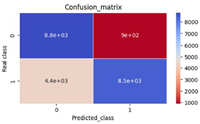Statistical analysis of melody lengths, note probabilities and note transitions of a bandish in raga Bihag
Abstract
Melody refers to a succession of musical notes that can be regarded as complete in a musical sense. For example, a line of a song or a raga bandish is a melody as it is complete. The number of notes in a melody is called its length. Unfortunately, the analysis of melody lengths is a neglected area in music research. Given that the significance of a melody in monophonic music (single melody line), such as Indian classical music is quantified by the product of the length of the melody and its frequency (number of occurrences in the musical piece), the novelty of our research lies in analysing the statistical features of lengths of a well-known bandish in raga Bihag. Additionally, the probability distribution of the notes is presented and a count of rising and falling note transitions in the sthayi and antara of the bandish is also taken. The experimental results are encouraging.
References
[1]Chakraborty S, Mazzola G, Tewari S, Patra M. Computational Musicology in Hindustani Music. Springer Cham; 2014. doi: 10.1007/978-3-319-11472-9
[2]Bihag Raag Bandish 16 Matras Allap Taan Music Notes in Hindi. Available online: http://www.saraswatisangeetsadhana.in/bihag-raag-description-notes-allap-taan-in-hindi/(accessed on 13 July 2023).
[3]Jairazbhoy NA. The Rags of North Indian Music: Their Structure and Evolution. Popular Prakashan; 1995.
[4]Gautam MR. Evolution of Raga and Tala in Indian Music. Munshiram Manoharlal Publishers; 1993.
[5]Beran J, Mazzola G. Analyzing musical structure and performance—A statistical approach. Statistical Science 1999; 14(1): 47–79. doi: 10.1214/ss/1009211806
[6]Beran J. Statistics in Musicology. Chapman and Hall; 2003. doi: 10.1201/9780203496947
[7]Tewari S, Chakraborty S. Statistical Musicology: Embracing Hindustani Ragas. Nova Science Publishers Inc.; 2022. doi: 10.52305/LCKT9868
[8]Klapuri A, Davy M (editors). Signal Processing Methods for Music Transcription. Springer New York; 2006. doi: 10.1007/0-387-32845-9
[9]Roads C, Pope ST, Piccialli A, Poli GD (editors). Musical Signal Processing: Studies in New Music Research. Routledge; 1997.
[10]Datta AK, Solanki SS, Sengupta R, et al. Signal Analysis of Hindustani Classical Music. Springer Singapore; 2017. doi: 10.1007/978-981-10-3959-1
[11]Sharma PL. Brhaddesi of Sri Matanaga Muni. Motilal Banarsidass; 1992.
[12]Sastri SS. Sangitaratnakara of Sarngadeva. Adyar Library Press; 1943.
[13]Mahabharati S. The Oxford Encyclopedia of the Music of India. Oxford University Press; 2011. doi: 10.1093/acref/9780195650983.001.0001
[14]Rowell L. Music and Musical Thought in Early India. University of Chicago Press; 2015.
[15]Lidova N. Natyashastra. Oxford University Press; 2014. doi: 10.1093/obo/9780195399318-0071
[16]Kapoor VK, Gupta SP. Fundamentals of Mathematical Statistics. Sultan Chand & Sons; 2018.
[17]Singh SB, Chandra S, Chakraborty S. A brief survey on music intervention in western and non-western (Indian) music. Biology and Medicine 2018; 3(4): 190–194. doi: 10.15406/mojbm.2018.03.00097
Copyright (c) 2023 Soubhik Chakraborty, Prerna Singh

This work is licensed under a Creative Commons Attribution 4.0 International License.











